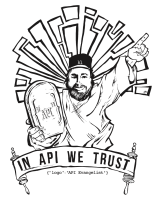Weather predictions, APIs, IoT, and a powerful digital platform for your uninterrupted Business
November 19, 2015 Leave a comment
This article was originally published on IBM Big Data Hub.
Many of us seem to watch weather forecasts to figure out what to wear the next day but forget about it right after that, unless of course there is snow in the forecast. Especially here in the northeast; we dread watching the weather report for about six months of the year.
For this reason, IBM’s acquisition of The Weather Company was a head-scratching moment for many because we are used to only the consumer aspect of weather, not the business side—especially given the high speculation by The Wall Street Journal.
Why did IBM, an IT software company, go after The Weather Company then? IBM started this fundamental shift a few years ago, transforming itself from a big IT and mainframe provider to a digital, data and insight company. Recent speeches by the CEO of IBM clearly articulate its main focus has shifted toward cognitive computing, analytics, IoT, APIs, hybrid cloud and digital platforms that support big corporations to reinvent themselves and engage in the digital economy.

 ation was about compromising integrity and beliefs for money. You might have seen his personal blog on the news lately about him turning down a big money offer to continue to do what he likes without the shackles. His blog, and the follow-up conversation we had, resonated very well with me. Some of his liberating thoughts were eye-opening to me (
ation was about compromising integrity and beliefs for money. You might have seen his personal blog on the news lately about him turning down a big money offer to continue to do what he likes without the shackles. His blog, and the follow-up conversation we had, resonated very well with me. Some of his liberating thoughts were eye-opening to me (
You must be logged in to post a comment.